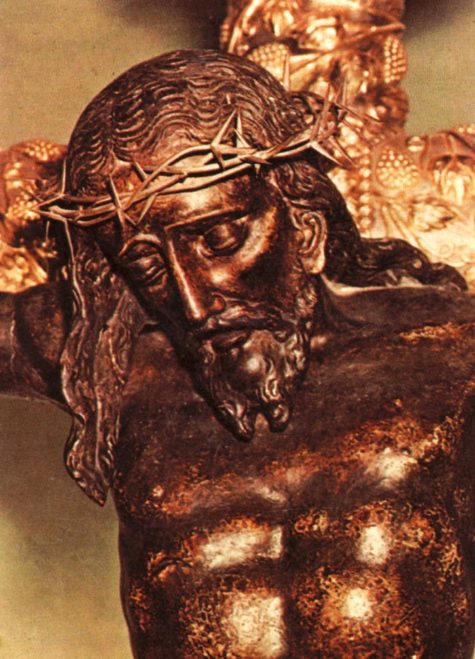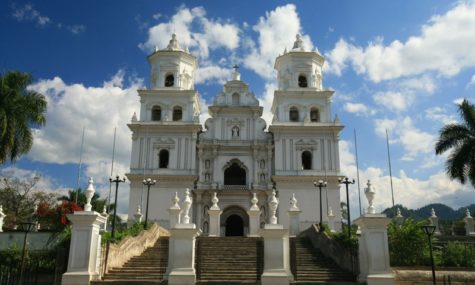The Black Christ of Esquipulas is a wooden image of Christ now housed in the Cathedral Basilica of Esquipulas in Esquipulas, Guatemala. A lovely Baroque structure painted a gleaming white, the basilica dominates the town’s skyline. Remarkably, it has survived many earthquakes over the centuries with little damage.
The image is known as “black” because over more than 400 years of veneration its wood has acquired a darker hue, although such a name is relatively recent – in the 17th century it was also known as the “Miraculous Lord of Esquipulas” or the “Miraculous Crucifix venerated in the town called Esquipulas”.
The Black Christ is housed in a glass case on the altar at the east end of the basilica. A large statue that depicts Christ suffering on the cross, it is part of a Crucifixion group with Mary Magdalene and St. John.
Pilgrims stand in line along the west side of the church to see El Cristo Negro up close, sometimes waiting for over an hour. After viewing the statue and saying their prayers, pilgrims back away from it on the other side, believing it an offense to turn their back on the holy image.
Tens of thousands of devout Catholics cram into Esquipulas during the annual celebration of the Black Christ which happens on January 15th. They come to pray and ask for help in front of a religious icon which has been credited with miraculously curing Pedro Pardo de Figueroa, the Archbishop of Guatemala, from a serious illness in 1737.
The largest number of pilgrims come from Guatemala, El Salvador, Honduras, Mexico, Nicaragua and other Central American countries. The January 15th festival is also marked in the United States of America in cities such as Los Angeles, New Jersey and New York with a high Central American population.
Special processions and services are also held on July 21-27, and during Holy Week each year.
History of Esquipulas Basilica
The statue of the Black Christ (El Cristo Negro) was comissioned by Spanish conquistadors for a church in Esquipulas. It was carved in 1594 by Quirio Cataño in Antigua and installed in the church in 1595. By 1603, a miracle had already been attributed to the icon, and it attracted increasing numbers of pilgrims over the years.
The history of the Basilica begins in 1735, when a priest named Father Pedro Pardo de Figueroa experienced a miraculous cure after praying before the statue. When he became Archbishop of Guatemala, he commissioned a beautiful basilica to properly shelter the beloved statue. The church was completed in 1759.
Perhaps an even more impressive miracle is the fact that Esquipulas was the site of a Central American peace summit which laid the groundwork for what became the Guatemalan Peace Accords of 1996 which ended the country’s ghastly 36 year civil war.
The Basilica de Esquipulas is such a major religious site that Pope John Paul II paid a visit in 1996 to mark the 400th anniversary of the church which the Pope is said to have called “the spiritual center of Central America.” In 2009, celebrations were held to mark 250 years since the basilica’s construction.
Sources: Wikipedia, Sacred Destinations and Trans Americas
Krazelna: Day of Hekate
Krazelna: Day of Hekate
Krazelna: Day of Hekate
Rachel V Perry: Emancipation Day
Rachel: The Nemesia





Leave a Reply